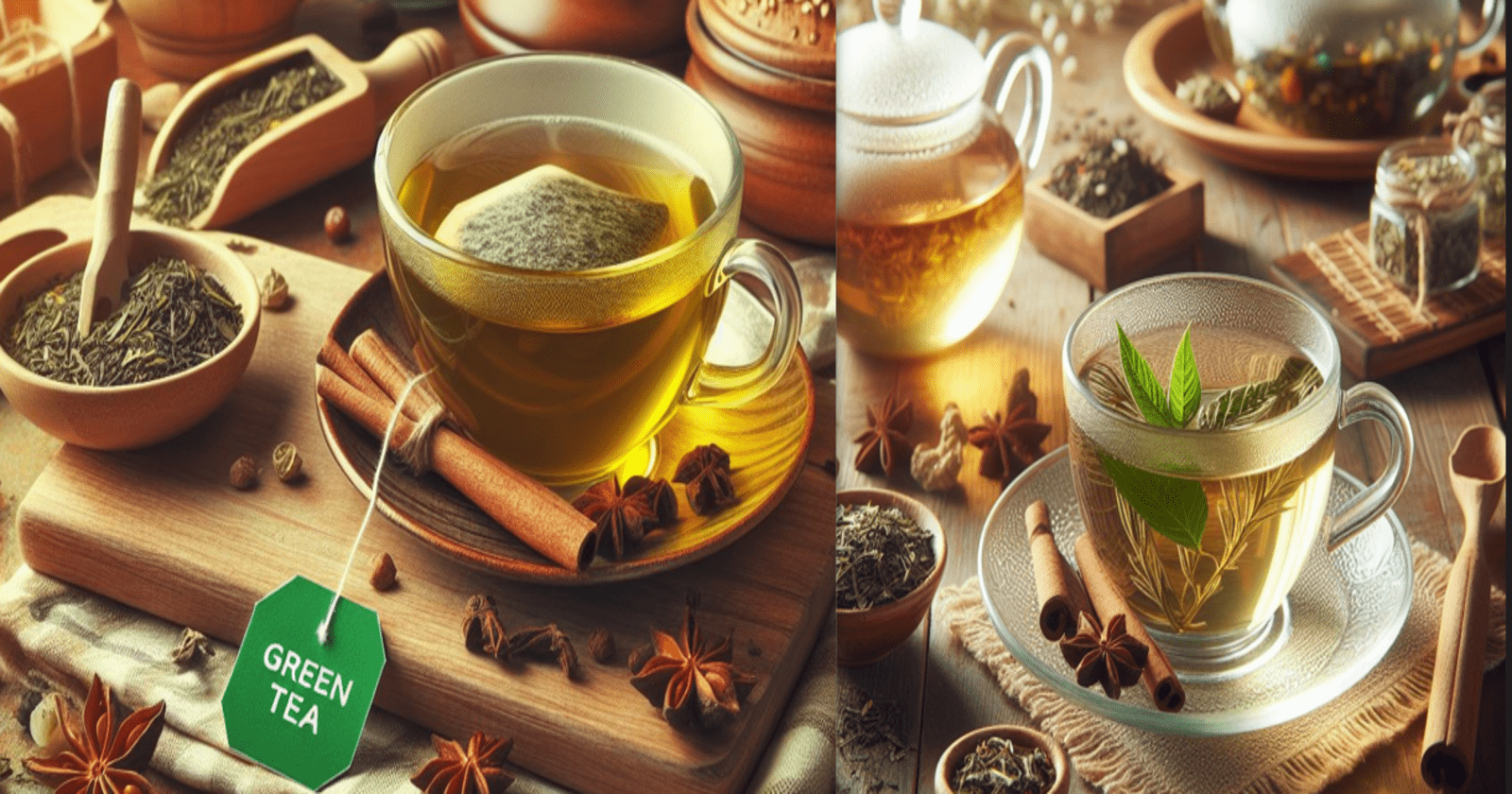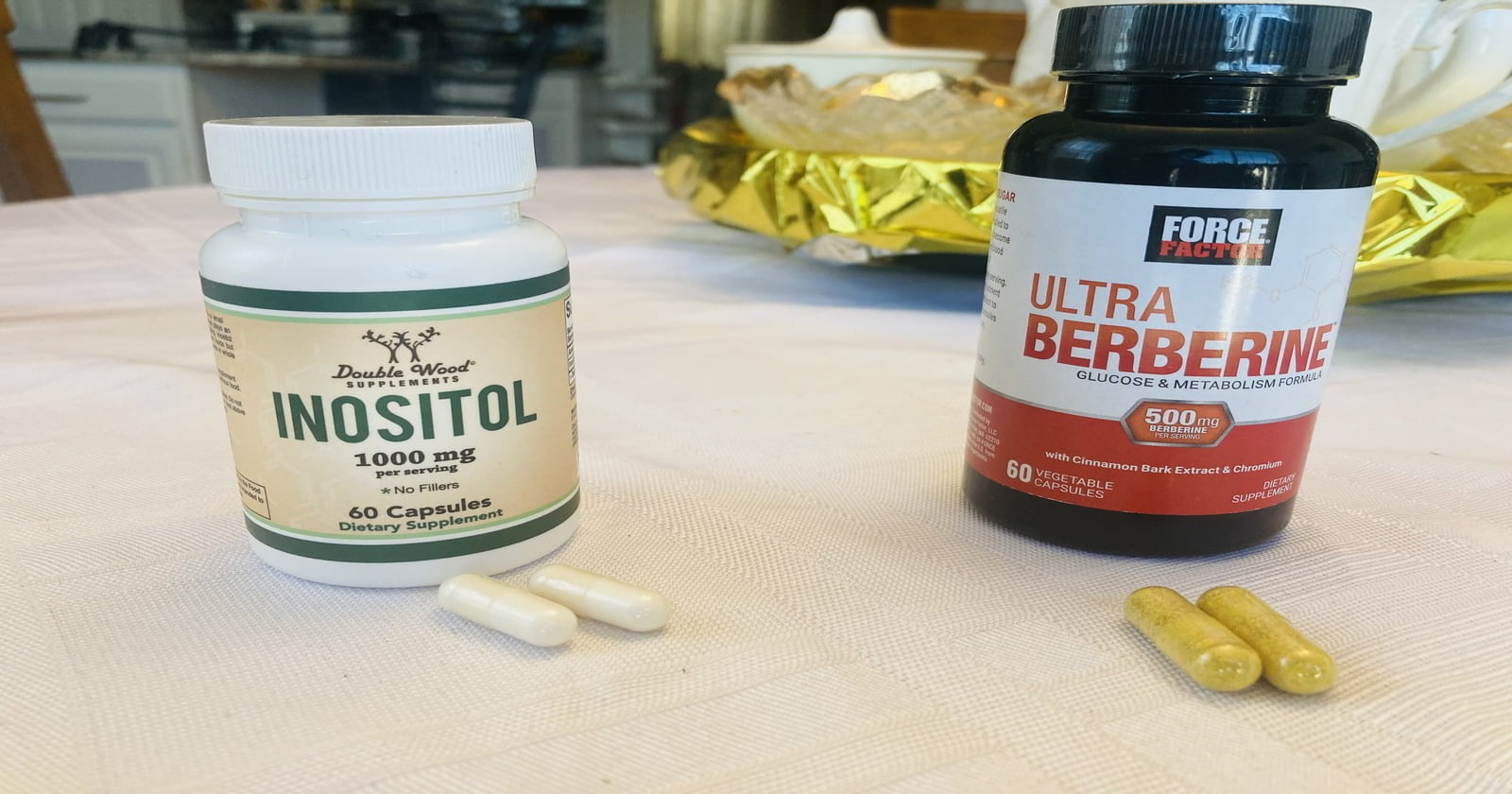Your cart is currently empty!
Category: Herbs

Arnica gel vs Voltaren: Advantages & disadvantages, dosage
Arnica gel is a topical treatment made from the Arnica Montana plant, used for its purported anti-inflammatory properties and is often applied to the skin to relieve muscle aches, joint pain, bruises, and swelling. Commonly used in homeopathic and alternative medicine practices and is more of a herbal treatment. Voltaren gel is a topical medication…

Green tea vs Herbal tea: types, benefits, medication interactions, which one is best for you
Green tea made from the leaves of the Camellia sinensis plant that have undergone minimal oxidation during processing, leaves are quickly heated or steamed after being harvested to prevent oxidation, which preserves their vibrant green color and fresh flavor. Herbal tea is a beverage made by infusing various herbs, spices, fruits, flowers, or other plant…

Spearmint vs Peppermint tea: for PCOS
Spearmint tea have an anti-androgenic effect, potentially impacting hormone levels that are often imbalanced in PCOS. Peppermint tea, on the other hand, is more commonly known for its digestive benefits and soothing properties. It provide relief for some symptoms like bloating or indigestion that can accompany PCOS. Spearmint Tea Peppermint Tea Helps regulate androgen levels…

Berberine vs Inositol: 2 supplements for PCOS, Blood sugar control & weight management
Berberine is a plant base supplement, known for its Anti-inflammatory and anti-diabetic properties. It is found in various plants, like barberry, goldenseal, and Oregon grape. Inositol is a naturally occurring sugar alcohol supplement, found in fruits, that plays a crucial role in various cellular processes. Inositol is It’s often considered a B-vitamin, although it’s not…

Inositol pills vs Inositol powder: PCOS and weight management
Inositol pill, a solid dosage form of a carbohydrate compound that is often classified as B8-vitamin, typically oval in shape and is designed to be swallowed vs Inositol powder finely ground substance that typically consists of tiny particles which allow for a more precise control over dosage. Healthcare providers can adjust the amount of powder…

Primrose vs Rose:benefits,Uses
Primroses are perennial with short stalk, wrinkled green oblong leaves pale yellow flowers single or clustered on stem. Rose plant features green, glossy leaves and thorny stems. Its main attraction is the ornate blooms, which come in various colors, each with a unique fragrance. Primula vulgaris, commonly known as the common primrose grow wilds wild…

Sorrel (Jamaican sorrel) vs Hibiscus
Sorrel (Roselle) a relative of Hibiscus and Okra, the leaves are lobed and reddish-green and are edible fleshy, bright red cup-like structure contains the plant’s seeds The color and tart, lemony taste of the calyces makes them a good replacement for cranberries. Hibiscus is a diverse flowering plants known for their large, flowers that come…

Parsnip root vs Parsley root
Parsnip root is cream-colored, cylindrical, and can grow long, with small root hairs or wrinkles. The parsley root has a more flattened, bulbous shape compared to the elongated taproot of a parsnip. The color of parsley root can range from pale beige to off-white, and it often has a smoother, less wrinkled skin compared to…

Rosemary vs Cilantro
Rosemary leaves are needle-like, dark green, and they grow on woody stems. Cilantro leaves are flat, delicate, and bright green. The stems are tender and not woody. Rosemary has a strong, woody, and slightly pine-like flavor. It is often described as earthy and aromatic, with a hint of lemon and pine. While on the other…

Dill vs Chive
Dill it has feathery green leaves and small yellow flowers, Chive have long, thin green stems that resemble small grass blades. Dill is slightly tangy flavor with a hint of anise (licorice-like) taste. Chives have a mild, onion-like flavor. Dill a Mediterranean native has found its way into kitchens worldwide, where it is often employed…

Basil vs Thyme
Basil, has large glossy leaves, Peppery, fresh aroma and flavor. Compare to Thyme robust, earthy flavor, like mint and oregano and Small gray-green leaves, used in stews, soups, sauces. Basil is a popular staple in Mediterranean and Southeast Asian cuisines, frequently featured in dishes like pesto and Caprese salad. Each herb brings its own distinct…

Zucchini Leaves vs Pumpkin Leaves Can you Eat these?
Zucchini leaves and pumpkin leaves differ in appearance and texture. Zucchini leaves are typically broader and smoother, with a deep green color and a slightly fuzzy texture on the underside. They are often heart-shaped and have prominent veins. On the other hand, pumpkin leaves are larger, more jagged, and have a rough, almost prickly texture.…

Garlic Head vs Garlic Clove vs Clove Head
In the heart of every kitchen lies a choice that can shape the very essence of a dish. the selection between a clove head, garlic clove and a garlic head. These small, unassuming bulbs hold a world of flavor within their papery layers, yet their characteristics diverge in intriguing ways. left to right garlic head,…

Spring Onion vs Leeks
Spring onions have long, thin green stalks with small white bulbs at the base compare to leeks which have a cylindrical shape with long, thick, white stalks and broad leaves. Both are members of the Allium family, which also includes garlic, onions, and chives. While they share some similarities, they have distinct differences in appearance,…

Spinach vs Collard greens
Spinach and Collard green both nutritious leafy green vegetables that belong to the same family, Brassicaceae. They are packed with essential vitamins, minerals, and fiber, making them excellent additions to a balanced diet. While both are highly nutritious, they do have some differences in taste and texture, which can influence how they’re used in cooking.…














